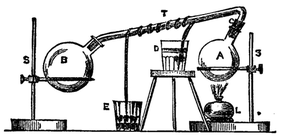
Summarizing requires students to distill information
Earlier this month, I wrote about Standard RL.2 and theme; the standard actually has two parts. The first part deals with theme, and the second asks students to summarize.
This is a case where the standards and effective teaching strategies overlap. The standard requires us to teach students to summarize; the act of summarizing helps students to achieve at higher levels. According to Robert Marzano (2001), summarizing is one of the most effective instructional strategies we have at our disposal, with an average effect size of 1.00 (in other words, a 34-point percentile gain). Based on his meta analysis of the research on summarizing, Marzano extracts three generalizations:
Rule-Based Summarizing
Rule-based summarizing comes from generalizations 1 and 2. This strategy involves a set of rules or steps that students use to construct a summary:
The document below is an example of rule-based summarizing in practice.
This is a case where the standards and effective teaching strategies overlap. The standard requires us to teach students to summarize; the act of summarizing helps students to achieve at higher levels. According to Robert Marzano (2001), summarizing is one of the most effective instructional strategies we have at our disposal, with an average effect size of 1.00 (in other words, a 34-point percentile gain). Based on his meta analysis of the research on summarizing, Marzano extracts three generalizations:
- To effectively summarize, students must delete some information, substitute some information, and keep some information.
- To effectively delete, substitute, and keep information, students must analyze the information at a fairly deep level.
- Being aware of the explicit structure of information is an aid to summarizing information.
Rule-Based Summarizing
Rule-based summarizing comes from generalizations 1 and 2. This strategy involves a set of rules or steps that students use to construct a summary:
- Take out material that is not important for your understanding.
- Take out words or passages that repeat information.
- Replace a list of things with a word that describes the things in the list (e.g. use "trees" for "elm, oak, and maple").
- Find a topic sentence or invent one if it is missing
The document below is an example of rule-based summarizing in practice.
Summary Frames
Summary frames are a direct application of generalization 3. A summary frame is a series of questions provided for students designed to highlight specific elements for different types of information. Each frame captures the basic structure of a different type of text. Below, you will find six types of summary frames:
Using these rule-based summarizing or summary frames can be an effective scaffold for students. As students become more familiar with summarizing, you can begin to remove these supports.
For additional resources, check here.
Resources:
Summary frames are a direct application of generalization 3. A summary frame is a series of questions provided for students designed to highlight specific elements for different types of information. Each frame captures the basic structure of a different type of text. Below, you will find six types of summary frames:
- The Narrative Frame
- The Topic-Restriction-Illustration Frame
- The Definition Frame
- The Argumentation Frame
- The Problem/Solution Frame
- The Conversation Frame
Using these rule-based summarizing or summary frames can be an effective scaffold for students. As students become more familiar with summarizing, you can begin to remove these supports.
For additional resources, check here.
Resources:
- Marzano, R. J., Pickering, D. J., & Pollock, J.E. (2001). Classroom Instruction That Works. Alexandria, VA: Association for Supervision and Curriculum Development.
- Marzano, R. J., Norford, J. S., Paynter, D. E., Pickering, D. J., & Gaddy, B. B. (2001). A Handbook for Classroom Instruction That Works. Alexandria, VA: Association for Supervision and Curriculum Development.
 RSS Feed
RSS Feed